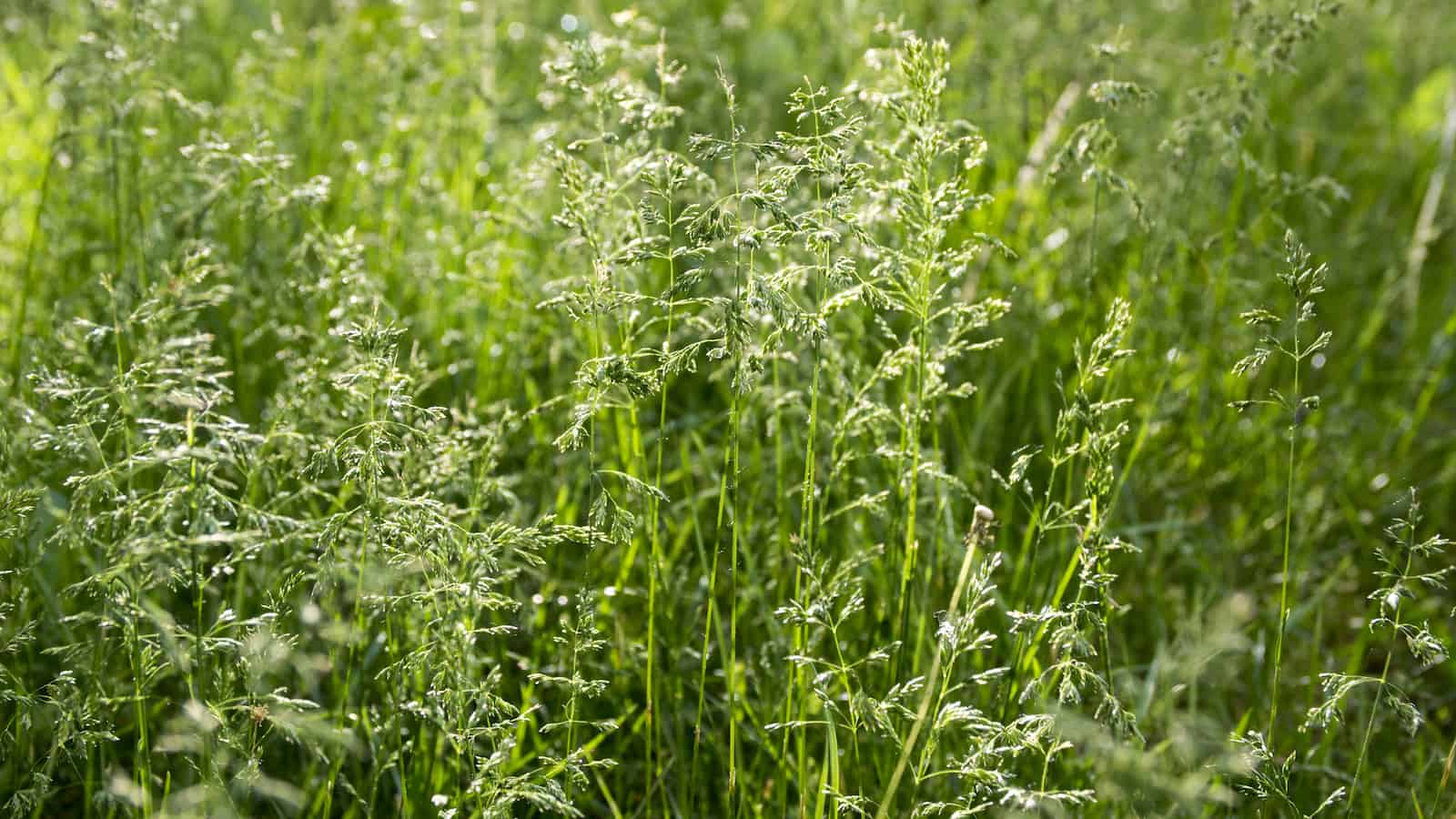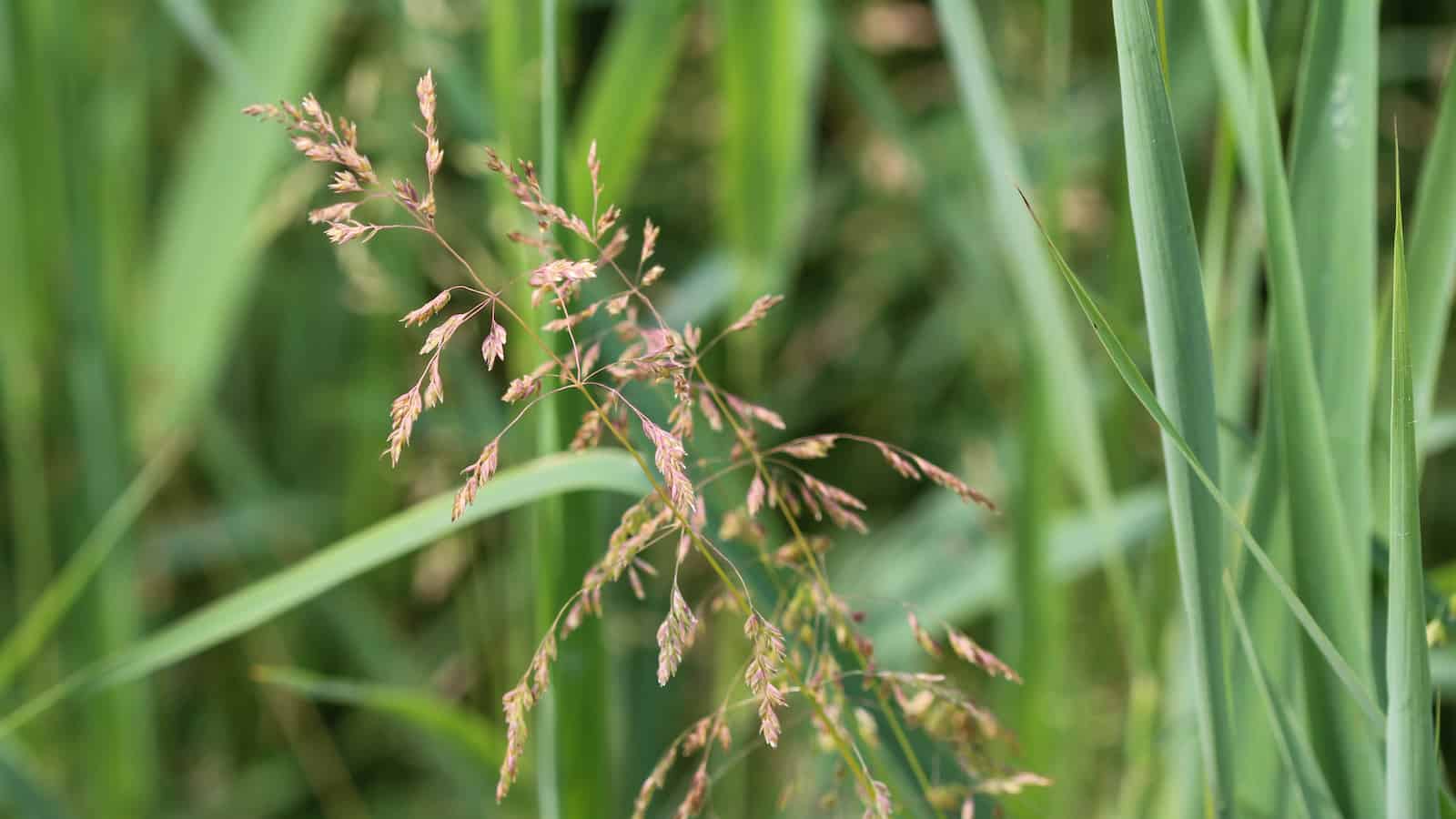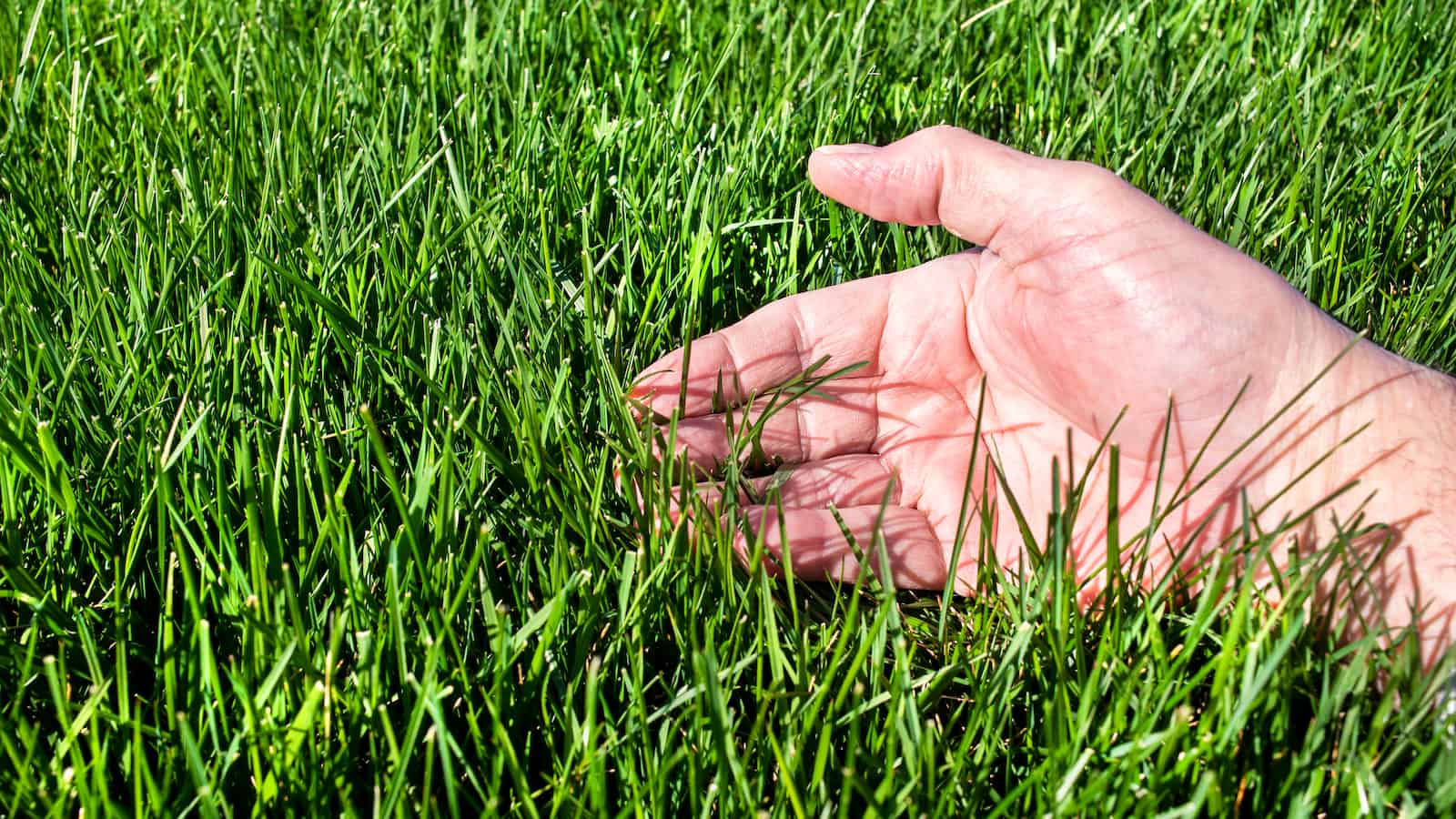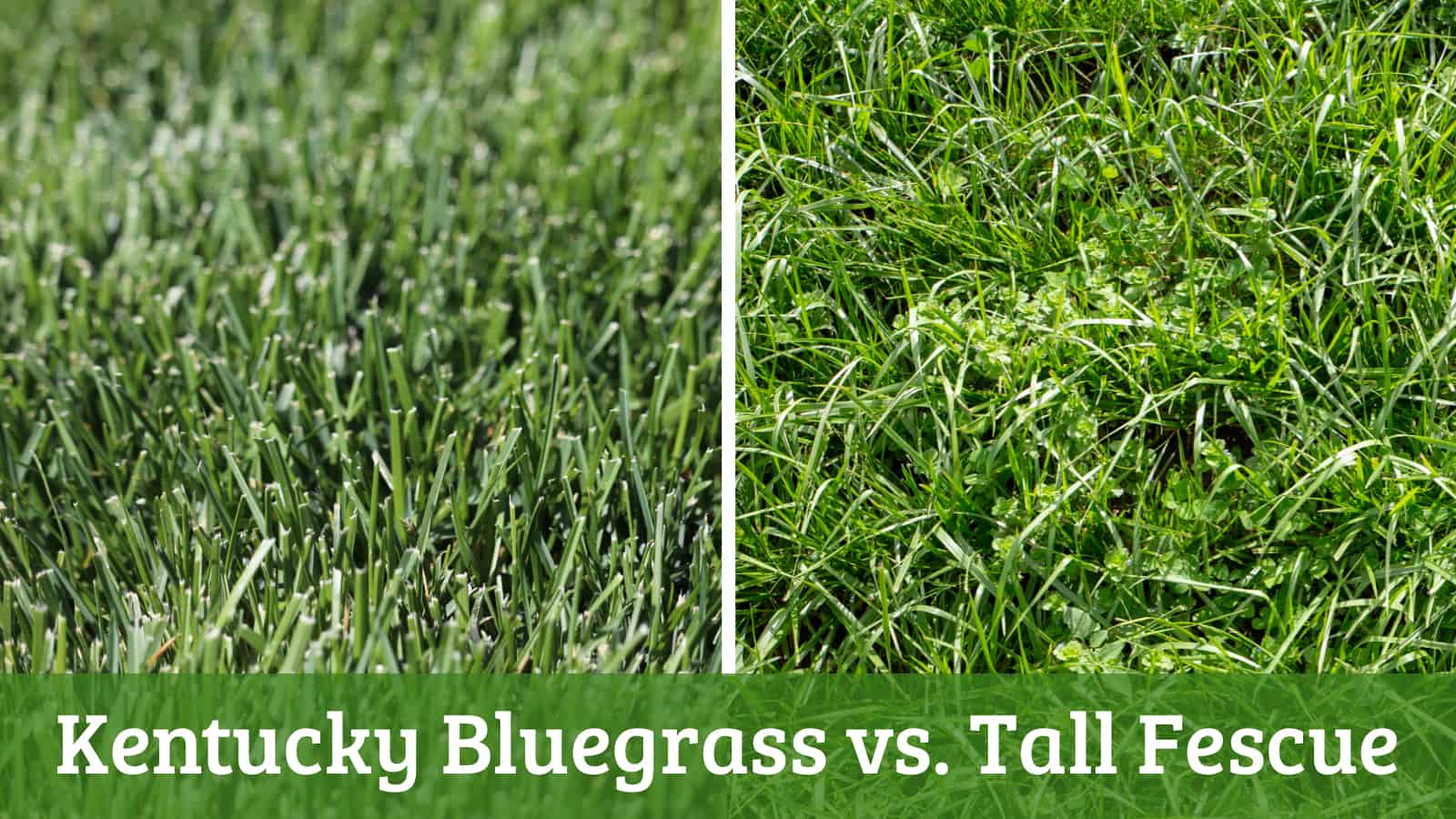Kentucky Bluegrass and Tall Fescue grass are both fantastic options to choose from if you live in an area where the temperatures don’t get too high and full sun is easily accessible.
While both of these grasses would make the ideal option for this specific environment, they each have unique characteristics you need to consider before making a final decision.
In this article, we will discuss the differences and similarities between Kentucky Bluegrass and Tall Fescue and provide you with all the essential information needed to choose the option that will provide you with a beautiful, healthy, and lush lawn.
Kentucky Bluegrass vs. Tall Fescue: Which is Which?
When choosing the best types of grass for your lawn, it is critical you do your homework and figure out which grass seed will bring you the lushest and most healthy lawn possible.
Each type of grass on the market has specific properties and needs that will ensure they get the nutrients and the environment they require in order to thrive.
Both Kentucky Bluegrass and Tall Fescue are standard grass seed options in homes, meadows, and businesses worldwide.
Here’s a quick comparison:
| Grass Type | Kentucky Bluegrass | Tall Fescue |
|---|---|---|
| Maintenance | High | Low-medium |
| Heat Tolerance | Medium (drought-tolerant) | High (drought-tolerant) |
| Shade Tolerance | Low | High |
| Watering frequency | 2” per week during summer | 2” per week during summer |
| Fertilizer requirements | 4 times per year | 1-2 times per year |
| Temperature for optimal growth | 50°F and 65°F | 60°F to 65°F |
| Ideal location | Northern U.S. coast to coast | Northern U.S. coast to coast |
| Physical characteristics | Medium-dark green blades with a soft, smooth texture | Course wide blades with medium-green coloring |
What is Kentucky Bluegrass?

Kentucky Bluegrass (scientific name: poa pratensis) is meadow grass native to parts of Europe and northern Asia. This type of grass is commonly grown for fodder in states like Kentucky and Virginia but is one of the most prevalent grasses used in backyards with cool-season climates.
It is a perennial grass that will continue to reappear every year and thrive during the spring and fall.
This plant tends to do best in cooler seasons, maintaining itself during some of the harshest winters in the northern states.
Kentucky Bluegrass is also ideal for pastures all around the country because it tolerates frequent grazing much better than other options, and it has a fantastic capacity for self-repair.
Identifying Features of Kentucky Blue Grass

If you are considering planting Kentucky Bluegrass on your property, you probably want to know what it is going to look like first. Here are some of the main characteristics and features of this grass species.
Kentucky Bluegrass has V-shaped leaves and can grow about 20-24 inches tall, with medium-to-dark green leaves that look and feel smooth and soft.
Quick overview of the key elements of Kentucky Bluegrass
- Cool-season grass, most commonly seen in lawns and meadows
- Ideal for northern lawns spanning from West to East
- Some types can be susceptible to heat and drought
- Doesn’t thrive well in shaded areas
- Grows V-shaped, smooth leaves
- It has a high tolerance for traffic and has high success in self-repair
- Some varieties are vulnerable to stress damage
- Cold, hardy grass
What is Tall Fescue?
Tall Fescue (scientific name: festuca arundinacea) is another popular option for lawn grass for many homeowners, mainly because of its strength and durability, especially when it comes to constant foot traffic.
This deep-rooted perennial plant grows in bunching clumps as opposed to most grasses that are sod-forming and self-spreading.
This type of grass is a popular option for cooler climates, like the Kentucky Bluegrass, and tends to grow quickly in the cooler spring and fall months.
Unlike Kentucky Bluegrass, many types of Tall Fescue grasses can do quite well in southern transition regions and have a tolerance to heat, shade, and drought-like conditions.
Although Tall Fescue is hardy and durable, it doesn’t have the same capacity for self-repair as other options, including Kentucky Bluegrass.
Identifying features of Tall Fescue grass

Does Tall Fescue grass sound like the ideal option for you? If so, here is a list of the key identifying features for this species, giving you an idea of what your backyard could look like.
Tall Fescue has medium-coarse textures and wide leaf blades with equal-sized veins. This particular grass has a medium-green color and, at times, develops a bluish-green appearance.
Quick Overview of the key elements of Tall Fescue grass:
- Common cool-season grass, with the ability to grow in the heat
- Ideal for northern regions and suitable in southern-transitioning regions
- Is heat-, shade-, and drought-tolerant
- Has course, wide blades
- Bunch-forming growth habit
- Self-repair capacity is limited
Kentucky Bluegrass vs. Tall Fescue: Which Option is Right for You?
Now that you have all the basic information to make a pretty safe decision on which option is right for you, let’s get a little deeper into the details. This will ensure you know exactly what you are getting once you purchase your grass seed or sod.
Choosing the Best Option for Climate
For optimal growth and health, it is critical to understand what types of temperatures and climates your grass requires.
Tall Fescue needs cooler soil temperatures, especially when adding new seeds to the soil, with ideal temperatures around 60°F to 65°F. That is typical of spring and early fall in the northern parts of the U.S.
Once the roots have been established, this grass can thrive in temperatures common during the summer months. It is relatively tolerant to drought conditions thanks to its deep root system with roots that can extend up to 36”.
On the other hand, Kentucky Bluegrass enjoys cooler temperatures during the germination period, with the ideal soil temperature hovering around 50°F and 65°F. Once their roots are established, this grass will reach its peak growth when the soil temperatures stay in the 60°F range.
Kentucky Bluegrass can handle much higher temperatures, with the ability to stay alive throughout warmer summer months when the heat peaks at around 90°F. However, new growth isn’t likely to occur during this period, and the grass will sit dormant until the temperatures drop.
Summary
Kentucky Bluegrass should be planted in northern regions where summer temperatures do not exceed 75°F for extended periods.
Tall Fescue is also a cool-season grass that grows best in areas where the spring and fall temperatures are cooler (typically around 60° to 65°F). It is most commonly seen in northern lawns from coast to coast.
Choosing the Best Option Based on Maintenance
Both grass types have a fairly similar water requirement for optimal growth. On average, that’s about two inches of water per week during the summer (whether by rain or hose) and one inch in the spring and fall. However, this is where the similarities end.
Kentucky Bluegrass is considered high maintenance. Lawn care, in the form of mowing, needs to be done on a regular basis. Never allow the blades to grow taller than 1-3 inches, and apply fertilizer four times a year on a strict schedule.
While Kentucky Bluegrass does much better when mowed short, Tall Fescue is commonly trimmed to 4.5-5 inches, but never any lower the 3.5”. When first placing seeds down in early fall, consider overseeding due to the thinning that will occur from heat and drought over the summer.
Besides proper start-up and routine watering and mowing schedules, Fescue isn’t considered a high-maintenance grass; it can typically thrive pretty well with little care.
Summary
Kentucky Bluegrass is a high-maintenance grass species that requires a well-rounded routine water and fertilization schedule as well as frequent mowing for proper lawn care.
Tall Fescue is much easier to care for and requires little in the way of maintenance, with the ability to thrive in most weather conditions.
Choosing the Best Option Based on Susceptibility to Pests and Disease
The majority of cool-season grasses are susceptible to the same diseases and infestations, with the most problematic being grubs and fungi in both Kentucky Bluegrass and Tall Fescue.
When it comes to Kentucky Bluegrass, insect infestation, especially grubs, is one of the most significant concerns, with beetles choosing to lay their eggs in overgrazed pastures. The eggs hatch larvae, which feed on Bluegrass roots, causing significant problems over a few years.
As for Tall Fescue grass, brown patch infestation is the most significant problem typically seen during the hot summer months. Brown patch disease is a fungus that will kill patches of your grass and typically shows up when the weather and humidity are high.
Summary
Kentucky Bluegrass is a robust and durable grass. It doesn’t struggle with many types of insect damage or disease, but it does see grub damage from time to time, typically having minor long-term damage associated with the insect.
Tall Fescue is also very hardy and strong, and it doesn’t typically fall victim to insects or diseases. The most problematic illness Tall Fescue grass suffers from is brown patch fungal infestation, which can be quickly cleared up with a bit of fungicide.
At a Glance
Now that you know everything there is to know about both grass types, here is a table for quick comparison.
Hopefully, it will make it a little easier to choose which option is best for you with both types of grass laid out side by side.
| Grass Type | Kentucky Bluegrass | Tall Fescue |
|---|---|---|
| Maintenance | High | Low-medium |
| Heat Tolerance | Medium (drought-tolerant) | High (drought-tolerant) |
| Shade Tolerance | Low | High |
| Watering frequency | 2” per week during summer | 2” per week during summer |
| Fertilizer requirements | 4 times per year | 1-2 times per year |
| Temperature for optimal growth | 50°F and 65°F | 60°F to 65°F |
| Ideal location | Northern U.S. coast to coast | Northern U.S. coast to coast |
| Physical characteristics | Medium-dark green blades with a soft, smooth texture | Course wide blades with medium-green coloring |

